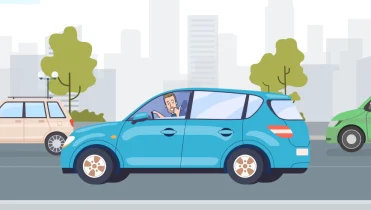less than
2 mins
- Home
- Personal Finance
- Guide
- What is voluntary excess for car insurance and how can it save you money on car insurance?
Voluntary Excess for Car Insurance
Car insurance excess is an out-of-pocket expense you need to pay if you make a claim. Your excess amount can impact your premium, and you can potentially save on your policy by choosing an additional amount called a ‘voluntary excess’. Here’s how it works.
Key Points
A car insurance excess is an amount you need to pay if you ever make a claim on your policy.
A voluntary excess is an additional amount you can agree to pay on top of your standard excess to get a cheaper premium.
Choosing the right excess all comes down to what’s suitable for your financial circumstances.
Comparing excesses, premiums and coverage across multiple insurers can help you figure out which policy offers the best value in your situation.
No matter how great a driver you are, things like accidents, damage and theft unfortunately happen. Having car insurance is one way to help avoid paying a big repair or replacement bill if something goes wrong.
But while you can protect yourself against being hit with major costs, if you ever make a claim on your car insurance policy, you’ll probably still have to pay an out-of-pocket amount called an ‘excess’. The amount you choose for your excess can impact your premium. Generally, the higher your excess, the cheaper your premium.
On top of that, you could potentially save more by opting into an additional ‘voluntary excess’. There’s no right or wrong way to go about excesses. It all comes down to your situation and whether it’s more important to you to save money on your premium or reduce your out-of-pocket costs if you ever need to make a claim.
This guide covers the ins and outs of excesses to help you decide.
Learn more about car insurance with these guides
What is an excess in car insurance?
A car insurance excess is an amount you need to pay if you ever make a claim on your policy.
For example, if your policy had a $1,000 excess and you made a claim for $4,000 worth of damage to your car, you’d foot the bill for $1,000 of the repair costs and your insurer would pay the remaining $3,000.
Excesses can differ from insurer to insurer and policy to policy.
In most cases, you can choose to increase or lower your excess on your car insurance policy. Raising your excess will typically lower your premium, whereas reducing your excess will increase it.
Some insurers apply an additional excess to certain types of drivers, like those aged under 25 or people who have recently had their licence cancelled, suspended, disqualified or restricted.
You might also not have to pay an excess at all, for example if you’re in an accident where you’re not at fault.
Are there different types of car insurance excess?
There are different types of excess, including:
Standard excess:
This is the base amount you will need to pay when making a car insurance claim. The standard excess generally applies to all claims for that policy, unless there are exceptions listed in the Product Disclosure Statement (PDS).
Voluntary excess:
A voluntary excess is an additional, optional amount you can agree to pay on top of your standard excess, usually in exchange for a cheaper premium.
Age excess:
An age excess is an additional excess that usually applies to drivers under the age of 25.
Even if the age excess doesn’t apply to you (the policyholder), you will generally still need to pay it if someone under the age of 25 has an accident while driving your car.
Inexperienced driver excess:
Similar to the age excess, the inexperienced driver excess is an additional amount on top of the standard excess. It generally applies to drivers over the age of 25 who’ve had their licence for less than two years.
Driver history excess:
This excess typically applies to drivers who have had their licence cancelled, suspended, disqualified or restricted in the three years before the policy start date.
Insurers can call excesses different things and have different rules for when they apply and when they don’t. This can make it tricky to know what you’ll actually need to pay if you ever make a claim.
Talking to our team, who can walk you through the different excesses across different insurers, is one way to make sure you know where you stand. They can help you get a good deal on your policy as well.
GET A QUICK QUOTEWhat is voluntary excess in car insurance?
A voluntary excess is an additional amount you can agree to pay on top of your standard excess. One of the big reasons you might agree to a voluntary excess is to get a cheaper car insurance premium. Generally speaking, the more you’re willing to pay out of pocket when you make a claim, the lower your premium will be.
If you don’t mind paying a bit extra should you ever have to make a claim, choosing a voluntary excess could be a good way to reduce your premium. On the other hand, if a bigger lump sum is the last thing you want to think about after an accident, you might choose to stick with a lower excess.
It all depends on what’s right for your financial situation.
Can I reduce my excess?
Yes, most insurers will give you the option to reduce your excess. Keep in mind that this usually means paying a higher premium. If additional excesses like an age excess or inexperienced driver excess apply to you, you probably won’t be able to reduce or avoid these. What you can do is compare coverage, premiums and excesses across multiple insurers to see which one works out to be the best value for your circumstances.
GET A QUICK QUOTEWhat's new in car insurance - Feb 2025
Cheaper cover: A few providers have slashed prices for comprehensive policies.
EV insurance: Cover options are expanding as more Aussies go electric.
Tech-driven savings: Telematics are driving discounts for safer drivers.
Conclusion
With Compare Club, you can find the car cover you need at a price you’ll like. Compare quotes and adjust your cost, coverage and excess in just a few clicks. Our specialists are experts in car insurance and will walk you through all the ins and outs of excesses to help you get a great deal.
Could you save money on your car insurance policy? Find out in under two minutes.
Things You Should Know
Compare Club Car Insurance is an online financial comparison service and is owned and operated by Compare Club Australia Pty Ltd (ACN 634 600 007). Compare Club does not compare all brands or all products offered by all brands.
The financial products compared on this website do not necessarily compare all features that may be relevant to you. Please check with a financial professional before you make any major financial decisions.
Any advice given here is general and has been prepared without considering your current objectives, financial situation or needs. Therefore, before acting on this advice, you should consider the appropriateness of the advice having regard to those objectives, situation or needs.
You should consider the insurers PDS prior to making the decision to purchase their product. For more information please read our Financial Services Guide (FSG) which contains further information about how our service works and how we make money.
Paul Coughran is the General Manager of Emerging Verticals at Compare Club. Paul has over 20 years of experience across a wide range of industries including Banking and Finance, Telecommunications and Energy. Paul leads a team of trusted experts dedicated to helping individuals make informed decisions about their insurance and utilities needs.

Meet our car insurance expert, Paul Coughran
Paul's top car insurance tips:
- 1
Regularly compare your insurance policies – You could be paying for cover you don’t need. Shopping around every so often can save you a fair bit, maybe even hundreds each year.
- 2
Don’t just look at the premium—check the excess too. While a higher excess might bring down your premium, remember you’ll have to fork out more if you do need to claim.
- 3
Double-check what’s included in your policy. Extras like windscreen cover or roadside assistance might not be part of the deal and could cost you more.
- 4
If you don’t drive much, consider usage-based insurance. Some policies base your cost on how much you actually drive, if you work from home or only use your car for short trips this might be a much better option.



